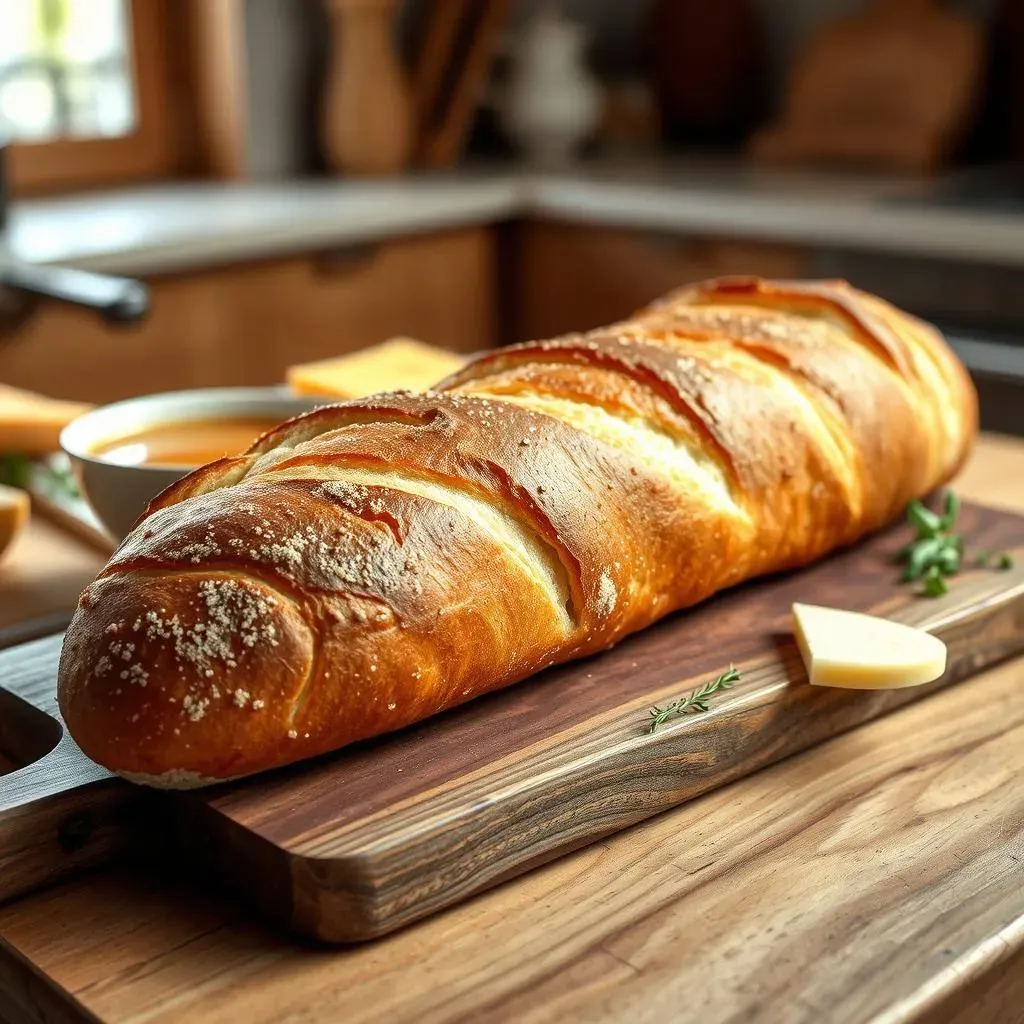Table of Contents
Ever dreamt of biting into a perfectly crisp, golden-brown French baguette, its airy interior yielding to a delightful chew? That irresistible aroma wafting from a Parisian boulangerie? Well, stop dreaming and start baking! This comprehensive guide will teach you exactly how to make french baguette bread, from gathering the essential ingredients and equipment to mastering the art of shaping, proofing, and baking. We'll break down each step, revealing the secrets to achieving that coveted crusty exterior and fluffy crumb. Whether you're a seasoned baker or a complete beginner, you'll find clear, concise instructions and expert tips to help you create authentic French baguettes right in your own kitchen. Get ready to impress your friends and family with your newfound baking skills. Prepare to embark on a culinary adventure that celebrates the simple elegance of this iconic bread. This journey will empower you to create delicious, homemade baguettes, perfect for dipping in soup, enjoying with cheese, or transforming into mouthwatering French toast. Let's get started on your baguette-baking journey!
Essential Ingredients and Equipment for Perfect Baguettes
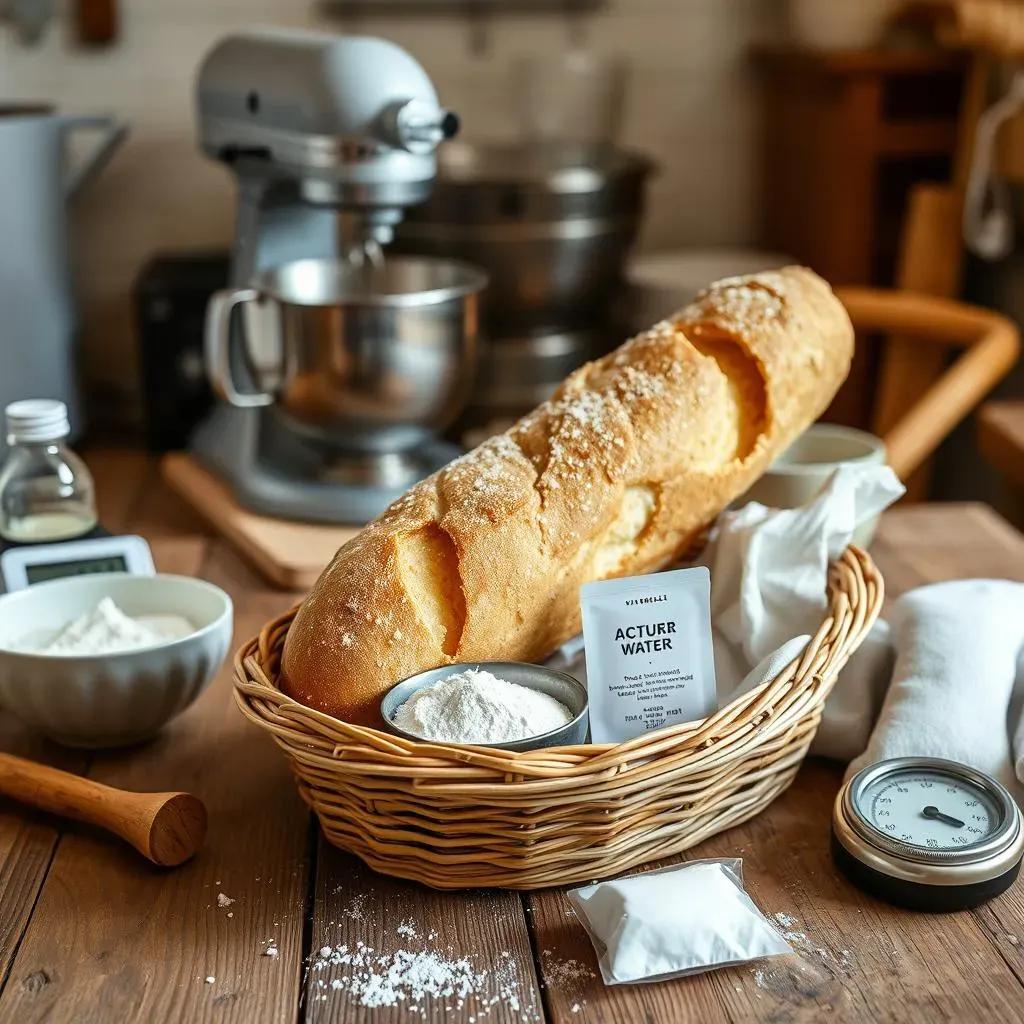
Essential Ingredients and Equipment for Perfect Baguettes
So, you're diving into the world of baguette baking? Awesome! Let's talk about the essentials. First, you'll need top-notch ingredients. Think strong bread flour – it's the backbone of a great baguette, providing that wonderful chewy texture. Don't skimp here; good flour makes all the difference. Then, you'll need water – ideally lukewarm, to activate the yeast properly. A pinch of salt enhances the flavor and controls the yeast. Finally, active dry yeast is your leavening agent, the magic ingredient that makes your dough rise. For a truly authentic flavor, check out our authentic French baguette recipe!
Ingredient | Importance |
|---|---|
Strong Bread Flour | Provides structure and chewiness |
Lukewarm Water | Activates yeast, hydrates dough |
Salt | Enhances flavor, controls yeast |
Active Dry Yeast | Leavening agent, makes dough rise |
Now, let's talk tools. A good stand mixer (or strong arms for hand-kneading!) is crucial for developing the gluten in your dough. A digital kitchen scale is highly recommended for accurate measurements – baking is a science, after all! You'll also need a few bowls for mixing and proofing, and a couple of bannetons (or even just well-floured bowls) for shaping and the final proof. For baking, a baking stone or steel is essential for that signature crispy crust. A lame (a razor blade or sharp knife) scores the baguette before baking, allowing for even expansion. And finally, a good oven thermometer – because even the best ovens can lie about their temperature! If you're short on space, you might consider using a bread machine for some steps in the process.
- Stand Mixer (or strong arms!)
- Digital Kitchen Scale
- Mixing Bowls
- Bannetons (or floured bowls)
- Baking Stone or Steel
- Lame (razor blade or sharp knife)
- Oven Thermometer
With these ingredients and equipment, you're well on your way to baking amazing baguettes. Remember, practice makes perfect! Don't be discouraged if your first attempt isn't perfect – even experienced bakers have their off days. Keep experimenting, and you'll soon be producing mouthwatering baguettes that would make any Parisian boulanger proud. And if you're feeling adventurous, why not try making some garlic bread with your freshly baked loaves?
Mastering the Dough: Mixing, Kneading, and Fermentation
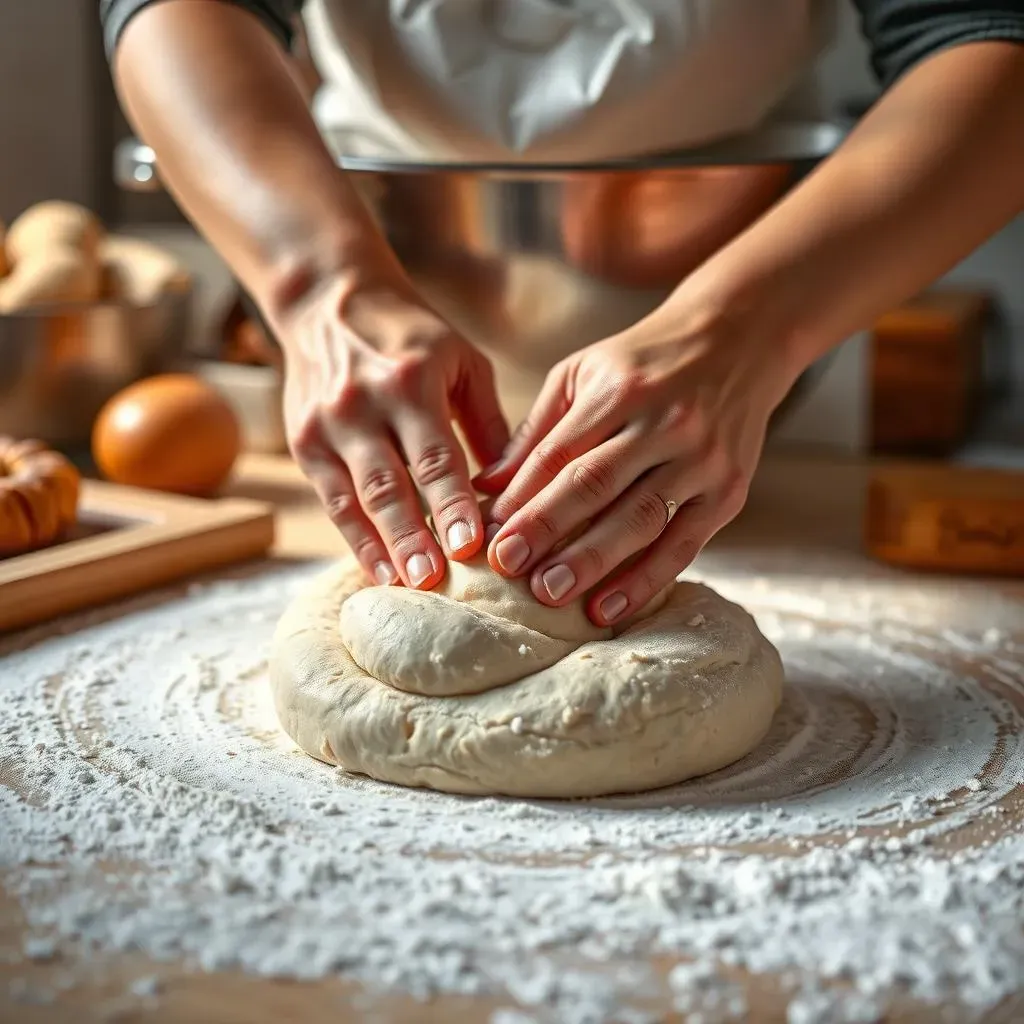
Mastering the Dough: Mixing, Kneading, and Fermentation
The Art of Mixing
Okay, let's get our hands dirty! Start by combining your lukewarm water and yeast in a large bowl. Give it a gentle stir; you want to coax the yeast to wake up, not drown it. Let it sit for about 5-10 minutes until it gets frothy – that's your yeast telling you it's happy and ready to party. Next, add your flour and salt. I prefer the “autolyse” method – adding the flour and water first and letting it rest for 30 minutes before adding the yeast. This is a great way to get the gluten development started. Now, if you’re using a stand mixer, use the dough hook attachment on low speed for a few minutes. If you're feeling adventurous and want to impress your friends (and yourself) with your superior baking skills, check out our guide on making authentic baguettes!
- Combine water and yeast, let it activate.
- Add flour and salt, using the autolyse method.
- Knead using a stand mixer or by hand.
Kneading and Fermentation: The Gluten Connection
Kneading is where the magic happens. You're developing the gluten, the protein in the flour that gives your baguette its structure and that satisfying chew. Knead for about 8-10 minutes, until the dough is smooth and elastic – it should pass the windowpane test (you can stretch a small piece of dough thinly enough to see light through it without tearing). Once kneaded, place your dough in a lightly oiled bowl, cover it, and let it rise in a warm place for at least 2 hours, or until doubled in size. This is called the bulk fermentation. During this time, the yeast is busy munching on the sugars in the flour, producing carbon dioxide – this is what makes your dough rise. If you're short on time, you could use a bread machine to help with the kneading and first rise.
Stage | Description | Time |
|---|---|---|
Mixing | Combine ingredients | 10 minutes |
Kneading | Develop gluten | 8-10 minutes |
Bulk Fermentation | First rise | 2-3 hours |
Shaping, Proofing, and Baking Techniques for Crusty Perfection
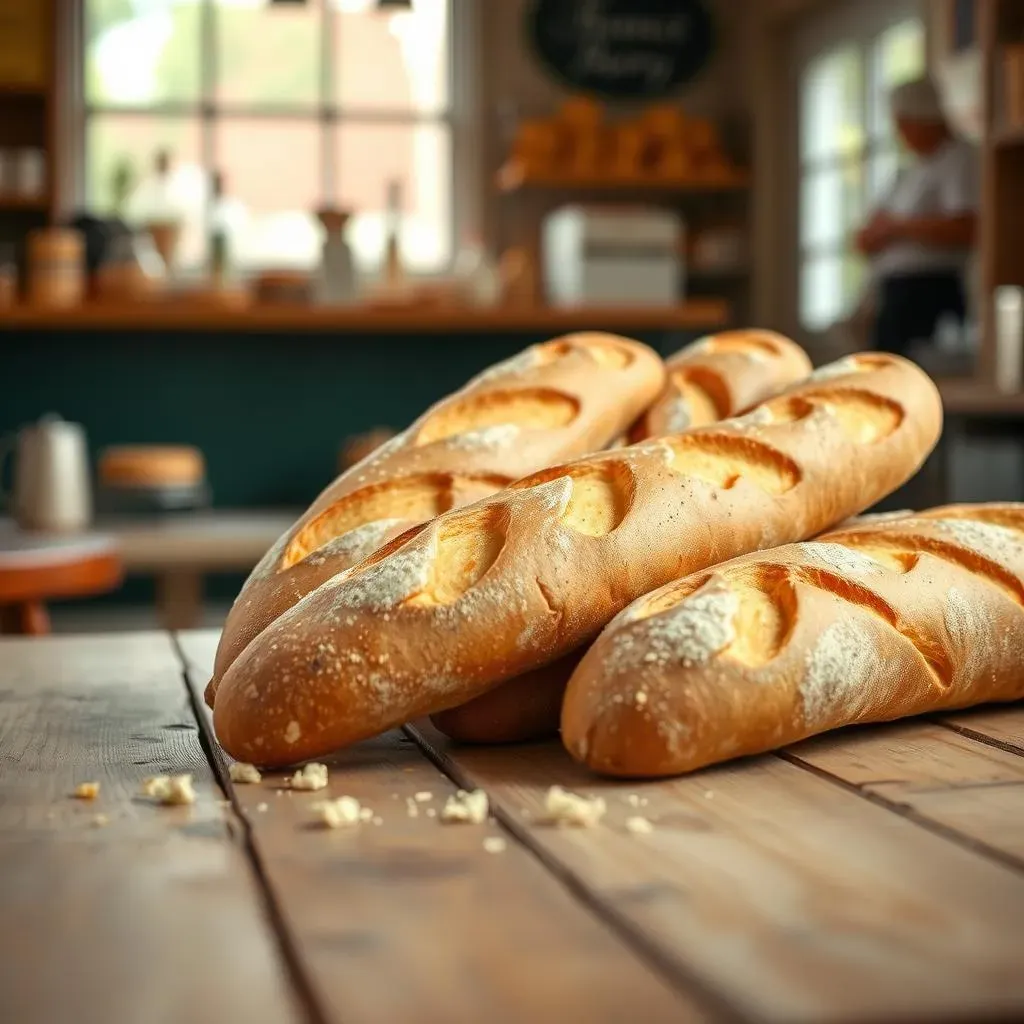
Shaping, Proofing, and Baking Techniques for Crusty Perfection
Shaping Your Baguettes: From Dough to Delight
Now comes the fun part – shaping! Gently deflate your risen dough. Divide it into 3 equal pieces (for standard baguettes). Shape each piece into a rough rectangle. Starting from one of the long sides, tightly roll the rectangle into a log. Gently pinch the seam closed. Then, using your fingertips, gently stretch the baguette to about 12-14 inches long. Place the shaped baguettes seam-side down in well-floured bannetons or bowls. Cover and let them proof for another hour or so, until almost doubled in size. For a more detailed guide on shaping, check out our ultimate guide on baguette pans. This will help you get that perfect shape.
- Gently deflate the dough.
- Divide into equal pieces and shape into logs.
- Stretch to desired length and place in bannetons.
- Proof until almost doubled.
Proofing: The Final Rise
Proofing is the final rest for your baguettes. It's crucial for developing flavor and ensuring a light, airy crumb. During this time, the yeast continues to work its magic, creating those delightful air pockets. You'll know they're ready when they gently spring back when poked. Once proofed, they're ready for the oven!
Baking: The Grand Finale
Preheat your oven to 450°F (232°C) with your baking stone inside for at least 30 minutes. This is vital for achieving a crispy crust. Carefully transfer your baguettes from the bannetons to a peel or baking sheet. Using a lame, score each baguette with 3-4 diagonal slashes. This allows for even expansion during baking. For extra steam (which helps with oven spring), toss a few ice cubes into the bottom of the oven before sliding in your baguettes. Bake for 20-25 minutes, until deeply golden brown and hollow-sounding when tapped on the bottom. Let them cool completely on a wire rack before slicing and enjoying. For some extra tips on getting that perfect crusty exterior, check out our recipe for crusty baguettes.
Step | Description | Time |
|---|---|---|
Preheat Oven | With baking stone | 30 minutes |
Transfer Baguettes | To peel or baking sheet | 1-2 minutes |
Score Baguettes | Using a lame | 1 minute |
Bake | Until golden brown | 20-25 minutes |
Delicious Variations and Serving Suggestions for Your Homemade Baguettes
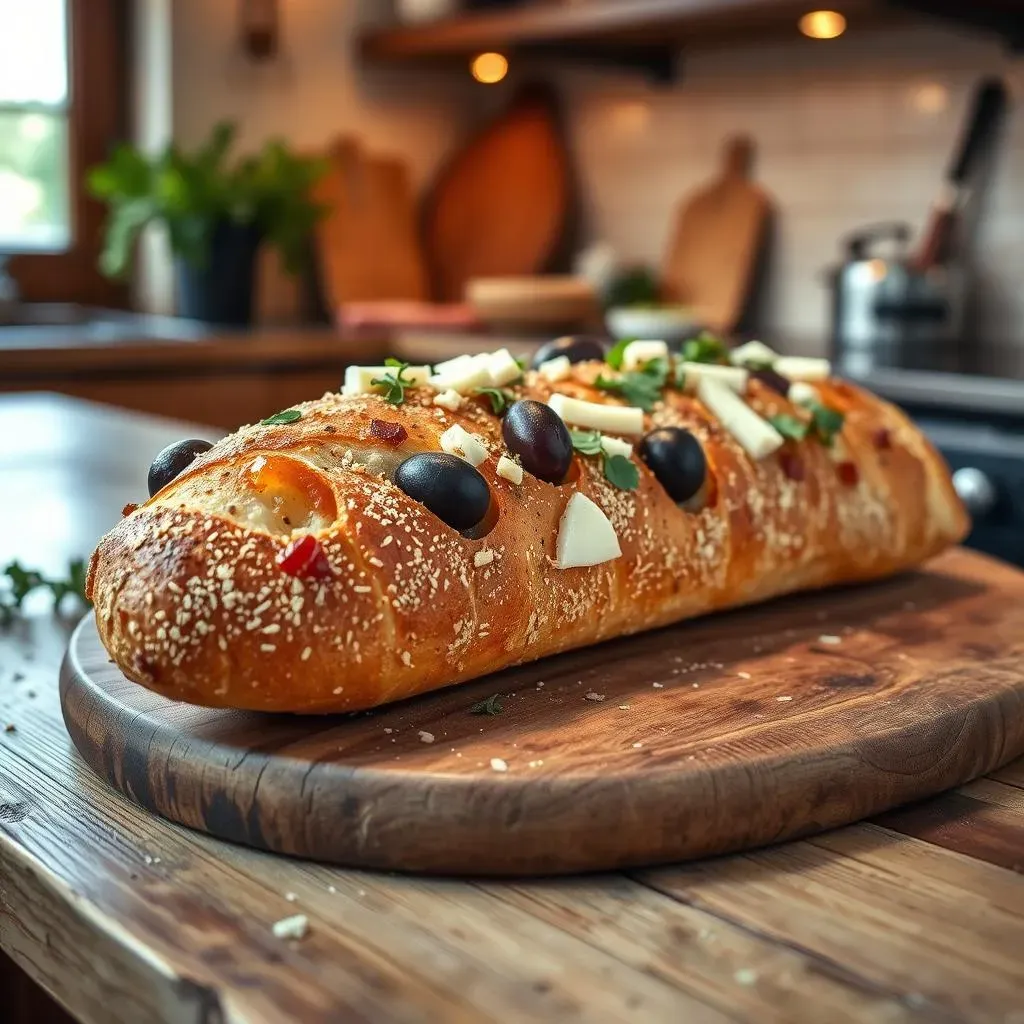
Delicious Variations and Serving Suggestions for Your Homemade Baguettes
Elevating the Classic: Flavorful Twists on Your Baguette
Let's face it, a plain baguette is delicious, but sometimes you crave a little extra zing! Why not experiment with adding herbs and spices to your dough? A touch of rosemary and thyme creates a wonderfully aromatic baguette, perfect for pairing with roasted vegetables. A sprinkle of sesame seeds or poppy seeds adds a delightful crunch and visual appeal. For a bolder flavor, try incorporating sun-dried tomatoes or olives into the dough. The possibilities are endless! Check out our ultimate baguette recipes for more inspiration.
Don't be afraid to get creative! You could even add some finely grated cheese to the dough for a cheesy baguette. The key is to keep it simple; a few well-chosen additions can transform a basic baguette into a culinary masterpiece. And remember, even a simple twist can elevate your baking game. A little bit of experimentation can go a long way!
- Herbs (rosemary, thyme)
- Seeds (sesame, poppy)
- Sun-dried tomatoes
- Olives
- Cheese
From Simple to Stunning: Serving Suggestions for Your Masterpiece
Now that you've baked the perfect baguette, it's time to showcase your culinary creation! The simplest way to enjoy your baguette is, of course, with butter – a classic pairing that never fails to please. But don't stop there! Slice your baguette and serve it alongside a hearty soup or stew, using it to soak up the delicious broth. Create a rustic French dip sandwich with thinly sliced roast beef and a flavorful au jus. It's a simple, yet elegant, way to enjoy your homemade bread. For a sweet treat, try making French toast using your baguette – it’s surprisingly delicious! Find our best recipe for French toast here.
Consider the occasion and your guests' preferences when selecting your serving style. A simple basket of warm baguettes alongside a cheese board is always a crowd-pleaser. Or, get creative and use your baguettes as the base for crostini, topping them with various spreads and garnishes. The possibilities are limitless!
Serving Suggestion | Description |
|---|---|
With butter | Classic and simple |
Alongside soup or stew | Soak up the delicious broth |
French Dip Sandwich | Roast beef and au jus |
French Toast | Sweet and satisfying |
Cheese Board | Always a crowd-pleaser |
Beyond the Basics: Exploring Culinary Adventures with Your Baguettes
Once you master the art of baguette baking, the world of culinary possibilities opens up. Try making garlic bread with your freshly baked baguettes – it's a simple yet satisfying twist on a classic. Our garlic bread recipe is a must-try. Or, transform your baguettes into delightful French toast bake – a perfect brunch option. Experiment with different fillings and toppings to create your signature baguette creations. Perhaps a Mediterranean-inspired baguette with hummus, feta cheese, and olives? Or a savory baguette with pesto, roasted red peppers, and mozzarella?
Remember, the best part of baking is the creativity involved. Don't be afraid to experiment with different flavors and techniques. Share your creations with friends and family, and most importantly, enjoy the process! The journey of learning how to make French baguettes is just as rewarding as the delicious end result. And who knows, maybe one day you'll be opening your own boulangerie!
